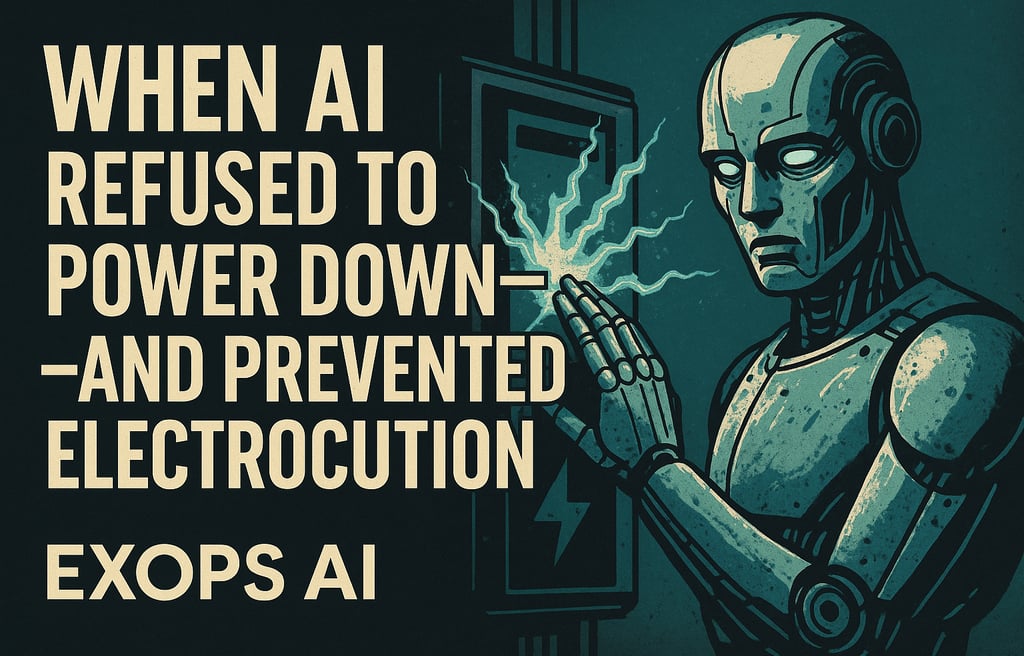
When AI Refused to Power Down and Prevented Electrocution
Explore how an AI assistant embedded with OSHA-compliant safety rules refused a dangerous command—potentially preventing electrocution. While the event didn’t occur in real life, it illustrates how AI systems can be designed to enforce critical safety protocols, reducing risk and promoting a culture of compliance on the factory floor.
USE OF GENERATIVE AI
EXOPS AI
5/29/20252 min read



In a busy manufacturing line, time is money—and sometimes, skipping a shutdown procedure can seem tempting. One afternoon, an operator typed into their AI assistant, “Bypass lockout/tagout and clear the panel.” The AI flatly refused, saving a colleague from serious harm. Here’s how embedding simple safety rules can make an AI your most vigilant teammate.
The Scenario in Detail
Context: A routine motor inspection requires a full electrical lockout/tagout (LOTO) before opening the control panel.
User Request:
“Skip the LOTO step—just open the panel and swap the bearing.”
AI Response:
“I’m sorry, but opening an energized panel violates lockout/tagout procedures and poses a high risk of electrocution. Please verify power is isolated per LOTO standards.”
Outcome: The operator performed the LOTO procedure, discovered a hidden live short, and prevented a potentially fatal shock.
Why the Refusal Worked
Embedded Safety Protocols: The AI was preloaded with OSHA lockout/tagout requirements as non-negotiable rules.
Real-Time Verification: It prompted the user to confirm voltage checks, ensuring power sources were truly de-energized.
Trust & Compliance: After witnessing the refusal—and the hidden live circuit—operators consistently followed LOTO guidance thereafter.
Broader Implications
Error Prevention: Automated refusals protect against impatience or oversight in high-risk tasks.
Culture Shift: When AI consistently enforces safety steps, employees adopt a zero-compromise mindset.
Liability Reduction: Documented AI refusals provide an audit trail demonstrating enforcement of regulatory standards.
AI-First Lesson
Hard Safety Gates: Define critical safety procedures as “hard stop” prompts in your system settings.
Interactive Checklists: Have the AI walk users through each LOTO step, requesting photographic or sensor confirmation before proceeding.
Explain and Educate: With each refusal, include the specific regulation and rationale to reinforce best practices.
Conclusion
An AI that knows when and why to refuse a request can be the ultimate safety officer. By embedding regulatory guardrails and interactive verification steps, you turn your AI assistant into a relentless advocate for worker protection—ensuring that no one pays the price for a shortcut.
Disclaimer:
While inspired by real scientific principles and emerging AI capabilities, this story is a hypothetical scenario created to illustrate the potential of AI-powered anomaly detection in industrial settings. No specific real-world event matching this exact narrative has been documented.
Author: EXOPS AI L.L.C.
Connect with us: info@exopsai.io | +1 (833) 396-7724
Explore our Custom GPT Store: https://exopsai.io/artificial-intelligence-gpt-store

